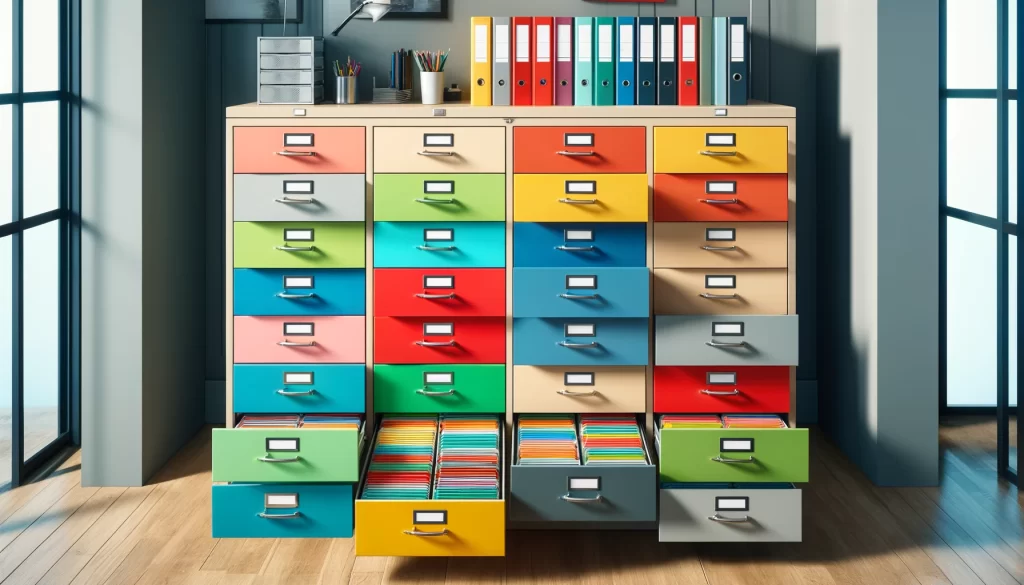How Creating a Filing System Can Help You Manage Your Time Better
In today’s fast-paced world, managing time effectively is crucial. One powerful tool to achieve this is creating an efficient filing system. This article will explore what a filing system is, why it’s important, and how to create one that can help you save time and stay organized.
What is a Filing System?
A filing system is a method for organizing and storing documents and information. It involves categorizing, labeling, and storing paperwork in a way that makes it easy to locate and retrieve when needed. Filing systems can be physical, involving paper documents and file cabinets, or digital, using computer folders and cloud storage.

Why Create a Filing System?
Time Savings:
- An organized filing system saves time by allowing you to find documents quickly. Instead of searching through piles of papers or scrolling through endless digital files, you can go straight to the relevant folder and retrieve what you need.
Reduced Stress:
- Knowing exactly where to find important documents reduces stress and frustration. It eliminates the chaos of disorganized paperwork and helps maintain a clutter-free workspace.
Improved Productivity:
- With a filing system in place, you spend less time on administrative tasks and more time on productive activities. This efficiency can lead to better performance and more time for critical tasks.
Better Record Keeping:
- A good filing system ensures that important documents are kept safe and can be easily accessed for reference or compliance purposes. This is essential for both personal and professional record keeping.
How to Create a Filing System
Assess Your Needs:
- Identify the types of documents you handle regularly. Are they financial records, client information, project documents, or a mix of various categories? Understanding your document types will help you structure your filing system effectively.
Choose Your Supplies:
- Invest in high-quality file folders, hanging file folders, and labeling materials. For physical systems, filing cabinets or storage boxes are essential. For digital systems, ensure you have adequate cloud storage or digital filing software.
Categorize Your Documents:
- Group similar documents into broad categories such as Finance, Personal, and Work. Within these categories, create subcategories to further organize your files. For example, under Finance, you might have subcategories like Bank Statements, Insurance Policies, and Tax Documents.
Label Everything:
- Clearly label all folders and subfolders. Use a label maker for physical files and consistent naming conventions for digital files. This clarity will make it easy to find and file documents.
Set Up a Logical Structure:
- Create a logical hierarchy for your files. This could be alphabetical, chronological, or based on frequency of use. For example, current bills could be filed in monthly folders, while older documents could be archived annually.
Implement a Color-Coding System:
- Use color-coded folders to visually differentiate between categories. This can streamline the filing process and make it easier to locate documents at a glance.
Regular Maintenance:
- Schedule regular times to update and maintain your filing system. Purge outdated documents, reassess categories, and ensure everything is in its proper place.
Document and Communicate the System:
- Create a Standard Operating Procedure (SOP) that outlines how the filing system works. This is especially important if multiple people will be using the system. Provide training and ensure everyone understands how to use it effectively.
Conclusion
Creating a filing system is an investment in time management and productivity. By organizing your documents logically and maintaining the system regularly, you can save time, reduce stress, and improve overall efficiency. Whether you’re managing a household, running a business, or handling personal records, a well-structured filing system is an invaluable tool for keeping your life organized and on track.



